Oct. 5, 2024 North Country Honor Flight 58 Veteran Biographies
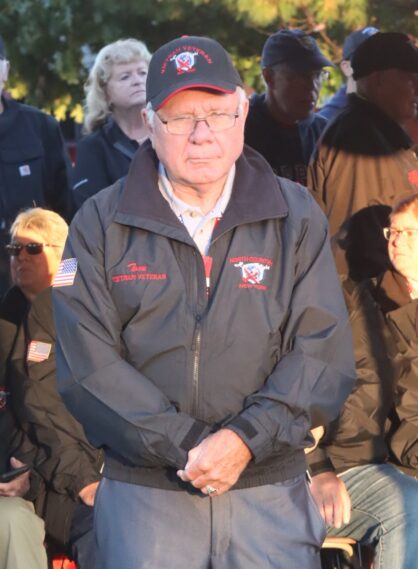 (All photos by David Brown)
(All photos by David Brown)
Thomas Batterson, U.S. Air Force, 1968-1991 – Vietnam
Tom received a draft notice. Looking to get out of English class, Tom took the Air Force qualifying exam, passed, and enlisted. After basic training at Lackland Air Force Base, Tom became an Air Crew Life Support. Tom ensured the survival of the flight crew on any aircraft. On leave, Tom joined his Dad and Uncle for a drink. It was an honor to be served at 18 since the drinking age was 21. Tom received many commendations for his 23 years of service. Today, at the Vietnam Wall, Tom will be touching the name of a best friend, David Van Blarcom. Tom hopes to leave his guilt behind and find peace.
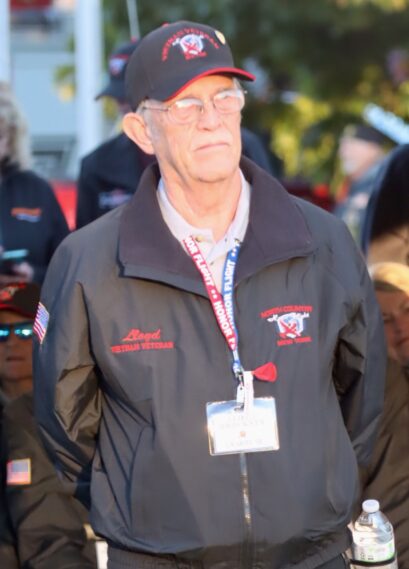 Lloyd Brockney, U.S. Army, 1965-1969 – Vietnam
Lloyd Brockney, U.S. Army, 1965-1969 – Vietnam
Against his mom’s wishes, Lloyd enlisted because he always wanted to be a soldier. Lloyd had basic training at Fort Dix and AIT at Brooke Army Medical Center, Fort Sam Houston. Sent to Vietnam, Lloyd was a medic with the First Air Calvary, 56th Medical Battalion. Lloyd was on sick call for the whole troop.
Sitting in a slick Huey about 200 feet in the air, Lloyd was shot down in Tay Ninh Province. Lloyd’s head was wedged in the tail of the helicopter. Knowing he had to get out, he couldn’t move. Sadly 5 comrades lost their lives that day. Lloyd received a Purple Heart for his heroism.
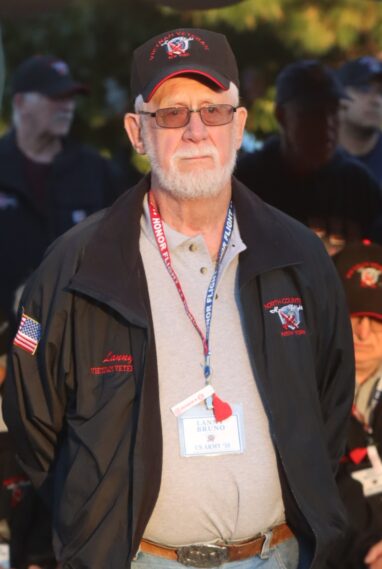 Lanny Bruno, U.S. Army, 1965-1968 – Vietnam
Lanny Bruno, U.S. Army, 1965-1968 – Vietnam
Lanny was working construction in South Dakota when he received a draft notice.Lanny immediately got a flight and enlisted. After basic and AIT training at Fort Dix, Lanny drove trucks and transferred to police duty.Lanny volunteered to attend Diesel School and became a Diesel Mechanic.Sent to Germany on TDY, Lanny’s buddy wanted to learn to ski at Zukes Pit. After a 2-hour lesson, he went to the mountain top and skied down so fast he didn’t know what to do, so he went to the ski lodge. Leaving Germany, Lanny was glad he flew to McGuire Air Force Base, where he completed his service.
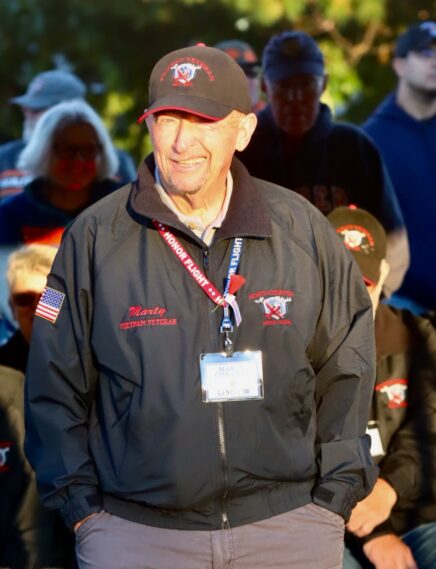 Martin Connell, U.S. Navy, 1967-1971 – Vietnam
Martin Connell, U.S. Navy, 1967-1971 – Vietnam
Marty enlisted and had basic training at the Great Lakes Naval Station. Marty was a radar man on the oldest commissioned destroyer in the Navy, the USS Wallace L. Lind (DD-703). Going to Vietnam, the ship patrolled in the Gulf of Tonkin and Subic Bay. Marty was running radars in North Vietnam at the Gulf of Tonkin when he could intercept transmissions of trucks on the move coming toward them. Marty saved many lives that day, including pilots flying a mission over North Vietnam. On R & R in Hong Kong Harbor, Marty learned much from two girls who served as tour guides and offered him chicken blood soup.
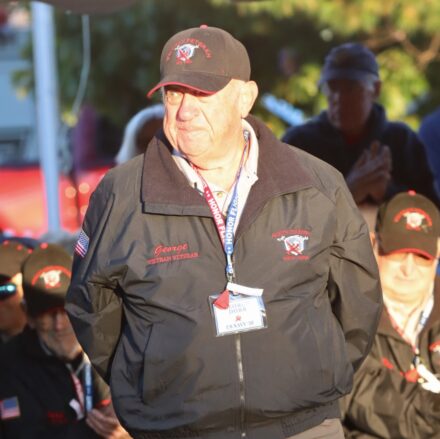 George Dorr, U.S. Navy, 1965-1969 – Vietnam
George Dorr, U.S. Navy, 1965-1969 – Vietnam
George was drafted into the Army but chose the Navy. George had basic training at Great Lakes Naval Station. George boarded the USS Mississinewa (AO-144), a Fleet Oiler. George was first a fireman and then a Boiler Tender who refueled everything from military ships to aircraft carriers. There were over 450 officers and enlisted people on the ship. George said they had it good and ate well, occasionally eating steaks and ice cream. The closest they got to Vietnam was the Equator. George enjoyed seeing many countries, including Sicily, Italy, France, Greece, and Turkey.
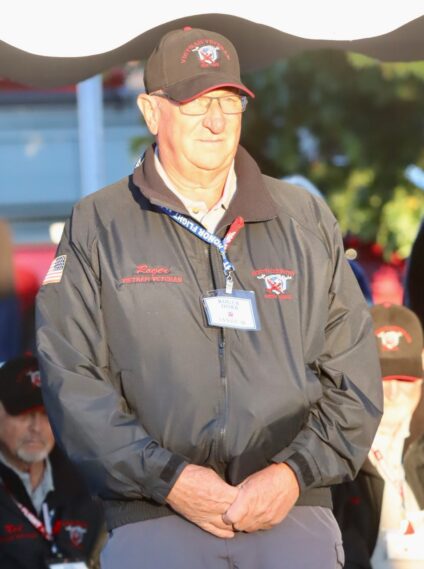 Roger Dorr, U.S. Navy, 1967-1971 – Vietnam
Roger Dorr, U.S. Navy, 1967-1971 – Vietnam
Like George, Roger was on the USS Mississinewa (AO-144). Assigned to Vietnam at Can Ranh Bay, Roger was an interpreter who spoke Vietnamese. Average firefights lasted 3 minutes. Roger received a call that a “black pony” was flying a fixed-wing aircraft and asked if they were in trouble. The troops kept their heads down as “black pony” dumped everything they had. Three hundred enemies were gone. Roger’s comrades weren’t injured. Roger received a Combat Action Ribbon for calling in fire support. Roger’s 8-foot pet boa constrictor took care of the rats.
Three Dorr brothers served in the Navy.
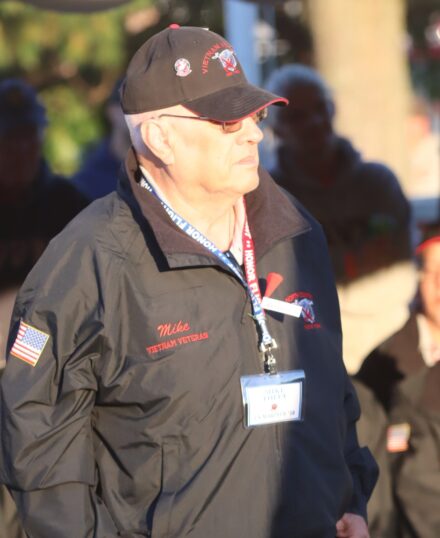 Michael Foley, U.S. Marine Corp, 1969-1972 – Vietnam
Michael Foley, U.S. Marine Corp, 1969-1972 – Vietnam
Following in the footsteps of his dad and cousin, Michael enlisted in the Marine Corps. Michael had basic training at Parris Island and trained as a demolition engineer who blew things up. Parents were not to send anything to soldiers. Michaels’s friend received a pizza. They forced-fed him, washing it down with hot water. The more he puked, the more they made him eat. Michael recalls going past the review station at graduation and being told ‘you are now U.S. Marines and will be until you die’. Michael said he wouldn’t swap it for anything as he learned how to love his brothers.
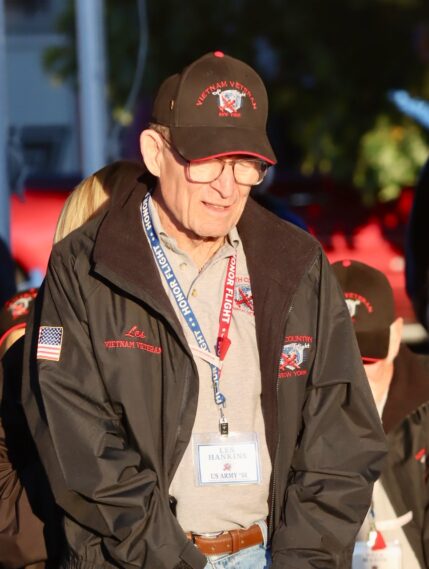 Leslie Hankins, Jr., U.S. Army, 1964-1968 – Vietnam
Leslie Hankins, Jr., U.S. Army, 1964-1968 – Vietnam
Leslie enlisted, had basic training at Fort Dix, and then went to the Defense Language Institute in Monterey, California. Leslie chose the Norwegian, Swedish, and Vietnamese languages as an interpreter. With the 1st Air Calvary Helicopter Unit, Leslie translated conversations between the South Vietnamese, the Viet Cong, and the North Vietnamese Army. At base camp, a Vietnam resident said shots were fired. Leslie protected him as they ran fast. U.S. troops were swimming and bathing and dove out of the water into the banks. Everyone was fine, but it was very scary.
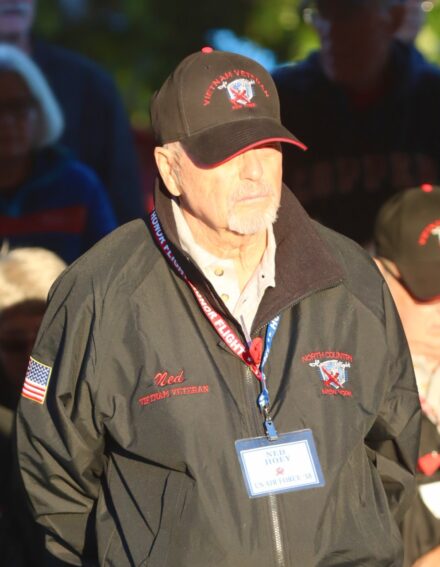 James Hoey, U.S. Air Force, 1968-1972 – Vietnam
James Hoey, U.S. Air Force, 1968-1972 – Vietnam
To avoid the draft, Ned enlisted and received basic training at Lackland Air Force Base and AIT tech school at Chanute Air Force Base. Ned was expedited due to the Vietnam War. In Ubon, Thailand, Ned inspected various aircraft, was a security force augmentee, and carried a rifle. At Hill Air Force Base, he x-rayed munitions and the Minuteman Missile. On a 3-day weekend pass, Ned was home for Christmas. Ned drove his gold and white 1968 Pontiac Firebird cross-country. Called to report for duty, the first sergeant looked at Ned’s license plate and said, “Get out of here; nobody will believe this story”!
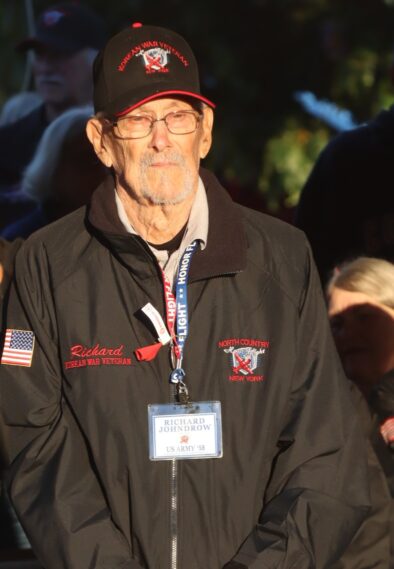 Richard Johndrow, U.S. Army, 1952-1954 – Korean
Richard Johndrow, U.S. Army, 1952-1954 – Korean
Richard was drafted and flown in the night on a C-46 for basic training at Fort Jackson. Sent to Korea, Richard, an infantryman, was in a combat zone with about 100 soldiers in their small unit. They were in tents beside each other, got to know each other, and weren’t smart enough to be scared. Richard drove an officer in a jeep over 8,600 miles, going through many tunnels and making a trip to Seoul to get moonshine. Driving to a USO show with Marilyn Monroe, the lieutenant got off a helicopter and got a front-row seat. Richard was about 40 miles back. Koreans did his laundry, and Richard said the mess hall was really great.
Richard was an Ambassador of Peace and enjoyed going to Mass, especially on Easter, when it was serene and he felt safe. The cease-fire took place on Richard’s wedding anniversary. 92 Years Old Richard Johndrow
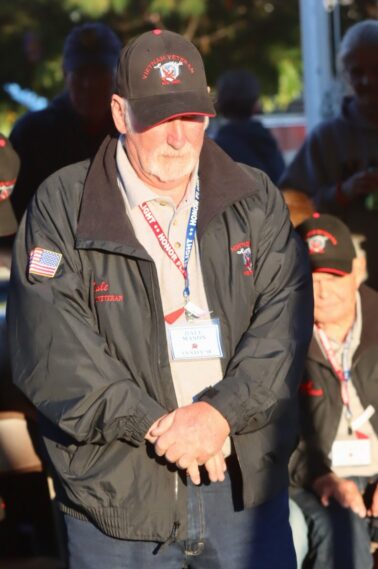 Dale Mason, U.S. Navy, 1971-1993 – Vietnam
Dale Mason, U.S. Navy, 1971-1993 – Vietnam
Dale had basic training at the Naval Training Center, San Diego. Dale was a dispensing clerk, handing out paychecks; he was everyone’s favorite person. Assigned to the USS Shasta (AE-33), an ammunition ship, each sailor received a case of Shasta soda. Dale was a Bosun Mate, a first loader on a 3-inch 50-caliber gun, he loaded ammunition shells 2-feet high to keep shells ready. With the cease-fire, Dale joined the 7th fleet, where all ships and carriers came together, returning to Subic Bay. Dale received many commendations for his 22 years of service, including a second star for the Vietnam cease-fire.
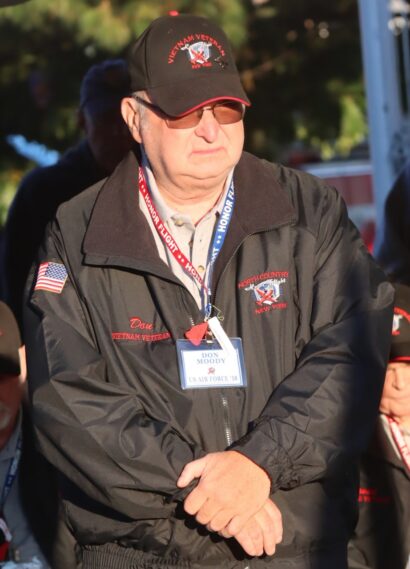 Donald Moody, U.S. Air Force, 1971-1991 – Vietnam
Donald Moody, U.S. Air Force, 1971-1991 – Vietnam
Don enlisted and trained at Lackland Air Force Base and AIT at Chanute Air Force Base. Don was stationed at Loring Air Force Base, Maine, with snow until July 4th. Assigned to Plattsburgh Air Force Base after his father’s death, Don wanted to be near family. As a KC-135 Crew Chief, Don worked on anything with more than two engines. Hopping on board, Don found a Captain in his crew seat and the plane was not moving until Don was in HIS seat. Don traveled the world on TDY and received several commendations for his 20 years of service to our country.
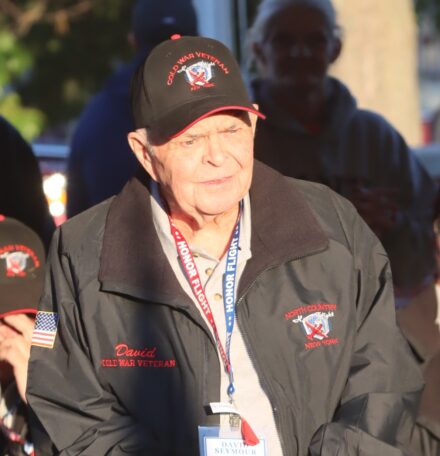 David Seymour, U.S. Navy, 1961-1965 – Cold War
David Seymour, U.S. Navy, 1961-1965 – Cold War
David enlisted to get money to buy a car. David had AIT training at Great Lakes Naval Station. A radar and sonar equipment repairman, David was on the USS Skipjack (SSN-585), the fastest, deepest diving, first nuclear-powered submarine. David and 78 crew members were on a tube submarine 258 feet long and 31 feet wide, as 20 highly classified people investigated everything. Trips lasted over 60 days underwater, with no communication. They spied on Russia and Cuba and were there when the Cuban Missile Crisis happened. David served four years and saved enough money to buy a car.
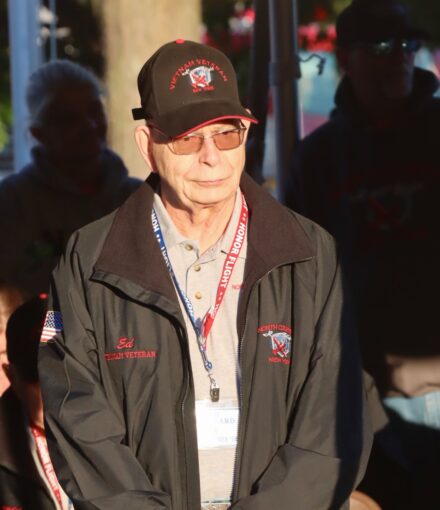 Edmund Woodard, U.S. Marine Corps, 1965-1969 – Vietnam
Edmund Woodard, U.S. Marine Corps, 1965-1969 – Vietnam
Right out of high school, Ed enlisted and trained as a Helicopter Mechanic at Parris Island. Aboard the USS Okinawa (LPH-3), Ed was ordered to Vietnam. Mortar attacks on their tents hit a tent and skipped a tent; luckily, they skipped Ed’s tent. Ed, a Marine helicopter crew chief and gunman, participated in over 140 combat missions. On a lifesaving mission in a Sikorsky helicopter, Ed earned a Sikorsky Winged “S.” Ed received seven Air Medals and was authorized to wear the Combat Air Crewman Wings with Three Stars and several commendations for his service to our country.
Posted: October 6th, 2024 under Adirondack Region News, City News, Community Events, General News, Honor Flights, Northern NY News, Peru/Regional History, Regional NY-VT News.
